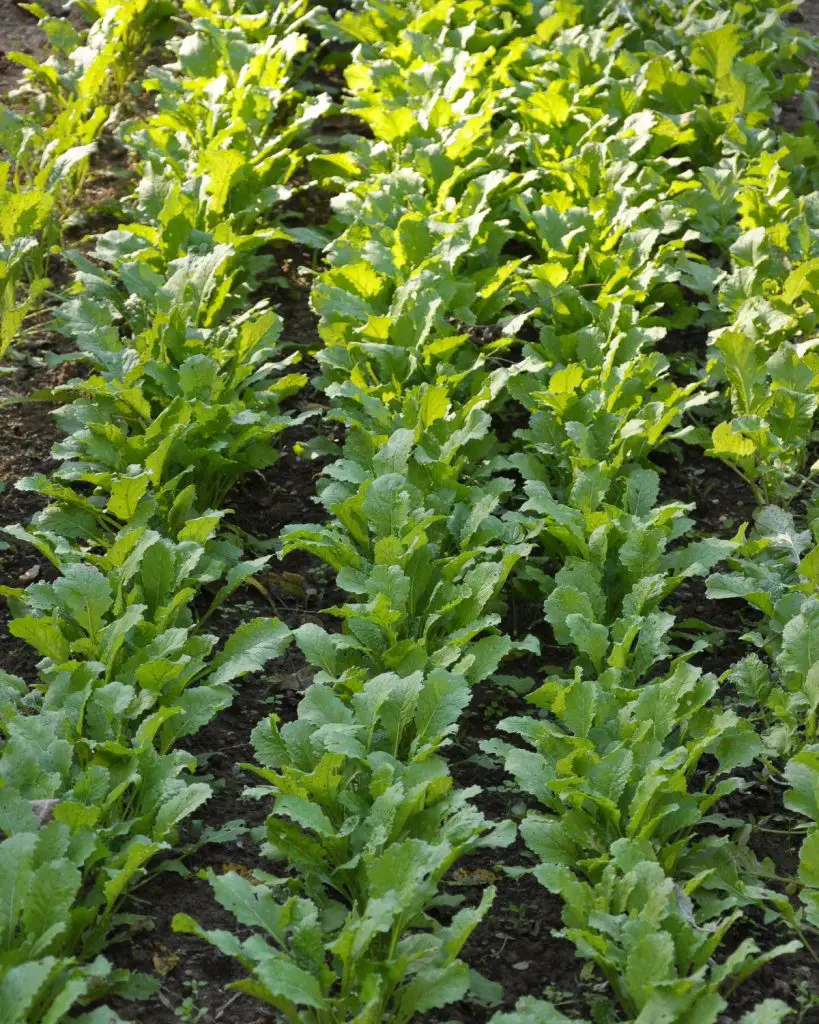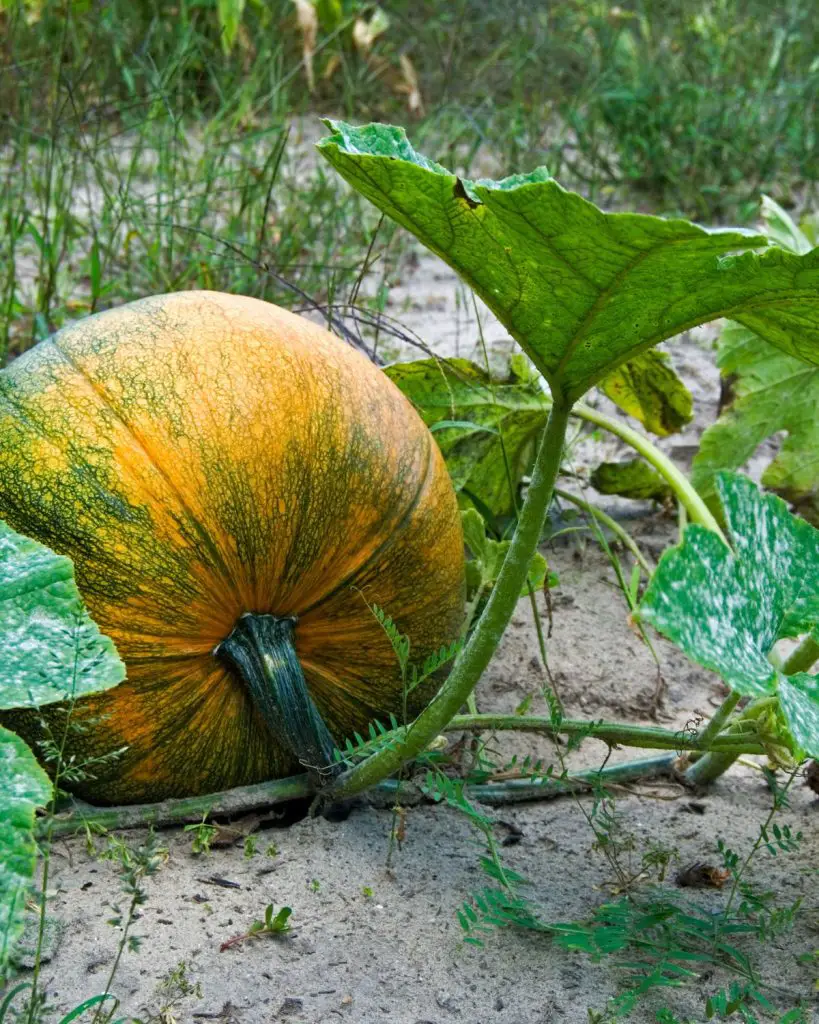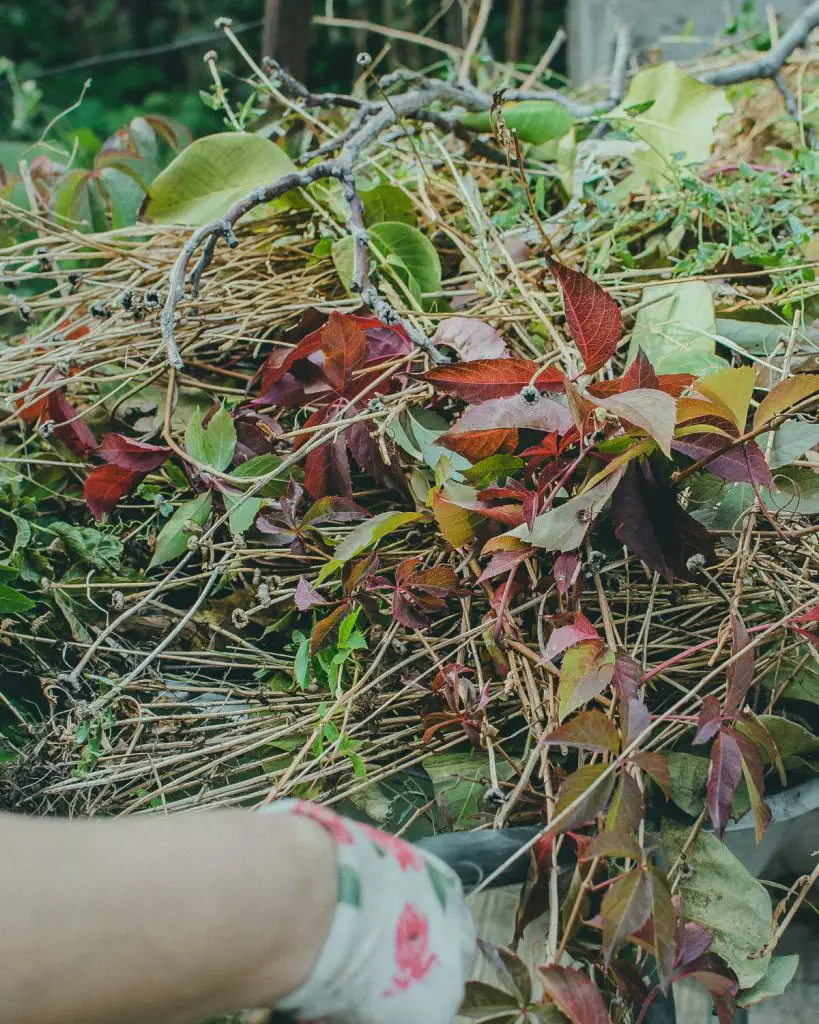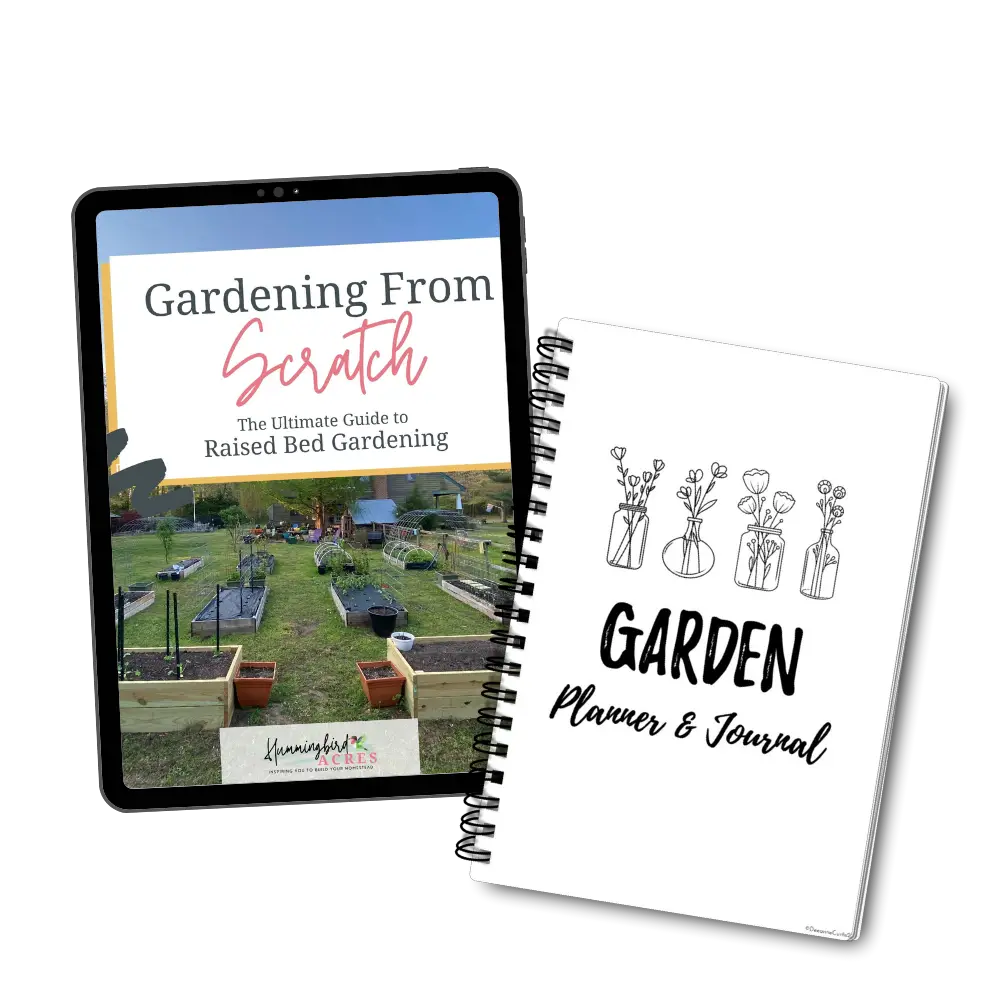5 Easy Steps to a Productive Fall Garden
A productive fall garden can be a great way to make the most of the cooler weather and shorter days. With the right planning and preparation, growing vegetables and other plants during the fall season can be just as rewarding as a summer garden. In this article, we will explore five easy steps to help you create a successful and productive fall garden.
The first step in creating a productive fall garden is to plan ahead. This involves intentionally leaving a bed open for fall planting and choosing the right crops to grow. By sowing a cover crop, such as buckwheat, after harvesting garlic in early summer, you can prepare the soil for the next round of planting. In addition, separating cold-loving and heat-loving vegetables can help ensure that each plant is getting the optimal growing conditions. By following these simple steps, you can maximize your chances of a successful fall garden.
Whether you are a seasoned gardener or just starting out, fall gardening can be a fun and rewarding experience. By following these five easy steps, you can create a productive fall garden that will provide you with fresh produce well into the cooler months. So, roll up your sleeves, grab your gardening gloves, and let’s get started!
Disclosure: As an Amazon affiliate, I earn from qualifying purchases at no extra cost to you. My blog contains other affiliate links as well for your convenience. To learn more, you may read my Disclosure Policy. Thank you for supporting my blog!
Understanding Fall Gardening
Fall gardening is a great way to extend the growing season and enjoy fresh produce well into the cooler weather. The key to a successful fall garden is to understand the growing season and the first frost date in your area.
The first frost date is the date when the temperature drops low enough to cause frost. This is an important date to know because it marks the end of the growing season for many plants. In order to have a productive fall garden, it is important to plant crops that can withstand cooler weather and that can be harvested before the first frost.
One way to ensure a successful fall garden is to choose plants that are hardy and can withstand cooler temperatures. This includes plants such as kale, spinach, lettuce, and broccoli. These plants can be planted in late summer and will continue to grow and produce well into the fall.
Another important factor to consider when planning a fall garden is the hardiness zone of your area. Hardiness zones are based on the average minimum temperature in a given area, and they can help you determine which plants are best suited for your climate.
When planning a fall garden, it is important to start early and make sure that you have enough time to plant and harvest your crops before the first frost. This may mean starting your seeds indoors and transplanting them outside when the weather is right.
Overall, fall gardening can be a rewarding and productive experience if you take the time to plan and prepare properly. By choosing the right plants, understanding your hardiness zone, and planting early, you can enjoy fresh produce well into the cooler weather.

Planning Your Productive Fall Garden
Planning your fall garden is key to achieving a productive harvest. Here are some tips to keep in mind when planning your fall garden:
Evaluate Your Summer Garden
Before planning your fall garden, take a moment to evaluate your summer garden. Identify which plants did well and which ones struggled. This will help you determine which plants to include in your fall garden and which ones to avoid.
Use a Garden Planner
Consider using a garden planner to help you map out your fall garden. Garden planners can help you determine the best planting dates for each crop, as well as provide spacing and fertilization recommendations.
Determine Planting Dates
Knowing the planting dates for each crop is crucial for a successful fall garden. Consult a planting calendar or almanac newsletter to determine the best planting dates for your area.
Choose Fall Vegetables
When choosing fall vegetables, consider cool-season crops such as broccoli, cauliflower, kale, and lettuce. These crops thrive in cooler temperatures and can withstand light frosts.
Consider Succession Planting
Succession planting is the practice of planting crops at different times to ensure a continuous harvest. Consider planting a new crop every two to three weeks to extend your harvest season.
By following these tips, you can plan a productive fall garden that will provide a bountiful harvest.

Preparing the Garden Bed
Preparing the garden bed is a crucial step in having a productive fall garden. It is essential to ensure that the soil is healthy and fertile to support the growth of plants. Here are a few steps to prepare the garden bed for fall planting:
Step 1: Clear the Garden Bed
Remove any weeds, rocks, or debris from the garden bed. This will help to prevent pests and diseases from infecting the plants. It will also make it easier to work on the bed.
Step 2: Add Organic Matter
Adding organic matter to the soil is an essential step in preparing the garden bed. Organic matter such as compost, leaves, or grass clippings can help to improve soil structure, increase nutrient availability, and retain moisture. Spread a layer of organic matter over the garden bed and mix it into the soil.
Step 3: Add Soil Amendments
Soil amendments can help to improve soil fertility and structure. Adding lime, bone meal, or rock phosphate can help to balance soil pH, add calcium and phosphorus, and improve soil texture. Follow the instructions on the package for application rates.
Step 4: Mulch the Garden Bed
Mulching the garden bed can help to retain moisture, suppress weeds, and regulate soil temperature. Spread a layer of mulch over the garden bed, leaving space around the plant stems to prevent rot.
Step 5: Build a Compost Bin
Building a compost bin is an excellent way to recycle kitchen and garden waste. Compost can help to improve soil fertility, structure, and water-holding capacity. Choose a location in the garden for the compost bin and start adding kitchen scraps, leaves, and grass clippings. Turn the compost regularly to speed up the decomposition process.
By following these steps, you can prepare the garden bed for fall planting and ensure a productive harvest.

Choosing and Planting the Right Crops
When it comes to choosing and planting crops for a productive fall garden, there are a few things to keep in mind. You want to select crops that thrive in cooler temperatures and have a relatively short growing season. Here are some categories of crops to consider:
Cool-Season Crops
Cool-season crops are the stars of the fall garden. They can tolerate frost and even thrive in cold weather. Some examples of cool-season crops include lettuce, greens, beets, kale, garlic, cabbage, broccoli, carrots, spinach, and radishes.
Fast-Maturing Crops
If you’re short on time, fast-maturing crops are a good choice. These crops have a shorter growing season and can be harvested quickly. Some examples of fast-maturing crops include radishes, beans, and cauliflower.
Root Crops
Root crops are a great addition to any fall garden. They can be harvested throughout the fall and winter, as long as the ground isn’t frozen. Some examples of root crops include beets, carrots, and turnips.
Salad Greens
Salad greens are easy to grow and can be harvested continuously throughout the fall. Some examples of salad greens include lettuce, arugula, and spinach.
Herbs and Flowers
Herbs and flowers can add color and flavor to your fall garden. Some examples of herbs and flowers to consider planting in the fall include pansies, chard, peas, Swiss chard, mustard greens, collards, and spring bulbs.
When selecting crops for your fall garden, make sure to read the seed packets carefully. Look for information on the ideal planting time, spacing, and soil requirements. With a little planning and preparation, you can have a productive fall garden that will provide you with fresh produce well into the cooler months.

Garden Maintenance and Care
Watering
Watering is an essential part of maintaining a productive fall garden. During the fall season, plants require less water than they do during the summer, but it is still important to ensure that they receive adequate moisture. The frequency of watering will depend on the type of plant, soil type, and weather conditions. It is important to water deeply and less frequently, rather than shallowly and more often. This encourages deep root growth and helps plants to be more drought-resistant.
Weeding
Weeding is another important aspect of garden maintenance. Weeds compete with plants for nutrients and water, and can quickly take over a garden if left unchecked. It is important to remove weeds as soon as they appear, before they have a chance to establish themselves. Hand weeding is the most effective method, as it allows you to remove weeds at the root. Mulching around plants can also help to suppress weed growth.
Fertilizing
Fertilizing is important for providing plants with the nutrients they need to grow and produce a bountiful harvest. During the fall, it is important to use a fertilizer that is high in phosphorus and potassium, as this will help to promote root growth and improve plant hardiness. It is important to follow the instructions on the fertilizer package, as over-fertilizing can lead to burnt plants and environmental damage.
Overall, maintaining a productive fall garden requires regular care and attention. By watering deeply and less frequently, removing weeds as soon as they appear, and fertilizing appropriately, gardeners can help their plants to thrive.

Must Have Gardening guide
Gardening From Scratch
the Ultimate Guide to Raised Bed Gardening
Harvesting and Storing Your Produce
Once your fall garden has produced a bountiful harvest, it’s time to start thinking about how to store and preserve your fresh produce. Proper harvesting and storage techniques can help extend the life of your fruits and vegetables, allowing you to enjoy them for weeks or even months to come.
When it comes to harvesting, it’s important to pick your fruits and vegetables at the right time. Most fall crops are ready to harvest when they reach full maturity, which is typically indicated by a change in color or texture. For example, pumpkins and winter squash should be harvested when their skin has hardened and turned a deep, rich color. Similarly, apples and pears should be picked when they are fully ripe and have a slightly soft texture.
Once you’ve harvested your produce, it’s important to handle it with care to prevent damage or spoilage. Avoid dropping or bruising your fruits and vegetables, as this can cause them to rot more quickly. If you’re storing your produce in a cool, dry place, be sure to arrange it in a single layer to prevent crushing.
When it comes to storing your produce, there are a few different options to consider. Some fruits and vegetables, such as apples and potatoes, can be stored in a cool, dark place for several weeks or even months. Others, such as leafy greens and herbs, are best stored in the refrigerator to help preserve their freshness.
To help extend the life of your produce even further, consider using preservation techniques such as canning, freezing, or dehydrating. These methods can help you enjoy your fall harvest well into the winter months, and can be a great way to reduce food waste while enjoying the flavors of the season.
Overall, harvesting and storing your fall produce requires a bit of knowledge and care, but with the right techniques, you can enjoy fresh, flavorful fruits and vegetables for weeks to come.
Transitioning from Summer to Fall Garden
As the summer season comes to an end, it’s time to start thinking about transitioning your garden from summer crops to fall crops. This process involves clearing out the old plants and preparing the soil for new ones. Here are a few tips to help you make a smooth transition:
Harvesting and Clearing Out
The first step in transitioning your garden from summer to fall is to harvest everything that is ripe and ready to be picked. This includes any fruits, vegetables, or blooms that you want to save. Once you have harvested everything, you can start clearing out the old plants.
Pull out any summer crops that are no longer producing, such as tomatoes or cucumbers. Be sure to remove the entire plant, including the roots, to prevent any diseases from spreading. If you have any plants that are still producing, you can leave them in the ground until they stop producing.
Transplanting
If you want to plant fall crops in the same spot as your summer crops, you will need to transplant them. Before you start transplanting, make sure to amend the soil with compost or other organic matter to replenish the nutrients that were used up by the summer crops.
When transplanting, be sure to space the plants properly to allow room for growth. You may also want to consider using a cover crop to help improve the soil and prevent erosion.
Cover Crops
Cover crops are a great way to improve the soil and prepare it for fall planting. Some popular cover crops for fall include rye, clover, and buckwheat. These crops help to prevent erosion, suppress weeds, and add organic matter to the soil.
To plant a cover crop, simply sow the seeds directly into the soil after clearing out the old plants. Be sure to follow the planting instructions for the specific crop you choose.
By following these simple steps, you can successfully transition your garden from summer to fall and prepare it for a productive season of fall crops.

Shhh… don’t tell!!
5 Secrets to Starting a Garden
Enter your name & email so we can send your our FREE Guide.
Using Cold Frames for Extended Growing Season
Cold frames can be a great tool for extending the growing season and producing fresh vegetables well into the fall and even winter. A cold frame is essentially a miniature greenhouse that can protect your plants from the cold weather and frost of autumn. They work by capturing and retaining heat from the sun, creating a warm and protected environment for your plants to grow.
Among the best candidates for growing in a cold frame are leaf lettuce, spinach, kale, arugula, beets, carrots, chard, kohlrabi, scallions, parsley, and radishes. These vegetables are all cool-season crops that thrive in cooler temperatures and can withstand some frost.
Using a cold frame is relatively easy. Simply construct or purchase a frame that is sturdy and has a clear, transparent cover. Place the frame in a sunny location, ideally facing south to capture the most sunlight. Fill the frame with soil, and then plant your seeds or seedlings as you would in a regular garden.
One important thing to keep in mind when using a cold frame is to monitor the temperature and ventilation. On sunny days, the temperature inside the frame can rise quickly, so it is important to open the lid or prop it open to allow for air circulation. On colder days, you may need to insulate the frame with blankets or straw to keep the temperature inside from dropping too low.
Overall, using a cold frame can be a great way to extend your growing season and produce fresh vegetables well into the fall and winter. With a little bit of planning and care, you can enjoy a bountiful harvest even as the weather turns colder.
Conclusion
In conclusion, having a productive fall garden is achievable with proper planning and execution. By making space for fall garden planting, choosing the right plants, amending and mulching the soil, and protecting the garden from pests and weather conditions, gardeners can enjoy a bountiful harvest even in the cooler months.
It is important to be knowledgeable about the best practices for fall gardening, such as planting at the appropriate time and choosing crops that thrive in cooler temperatures. By doing so, gardeners can maximize their yield and minimize stress on their plants.
Remaining neutral and clear in decision-making can also contribute to a successful fall garden. This means avoiding planting too many crops that may compete for resources and ensuring that each plant has enough space to grow and thrive.
Overall, a productive fall garden can provide fresh produce and a sense of accomplishment for gardeners. With the right tools and knowledge, anyone can enjoy a successful fall harvest.
You may also enjoy these related articles:
- Grow Butterfly Weed for a Beautiful Butterfly Garden
- Plants for Butterfly Gardens: Attract More Butterflies to Your Yard with These Beautiful Flowers
- Plan Your Own Butterfly Garden: A Beginner’s Guide
Did you enjoy this article? Want to hear more? Stay in touch! Sign up below to receive weekly tips and inspiration for your homestead.

